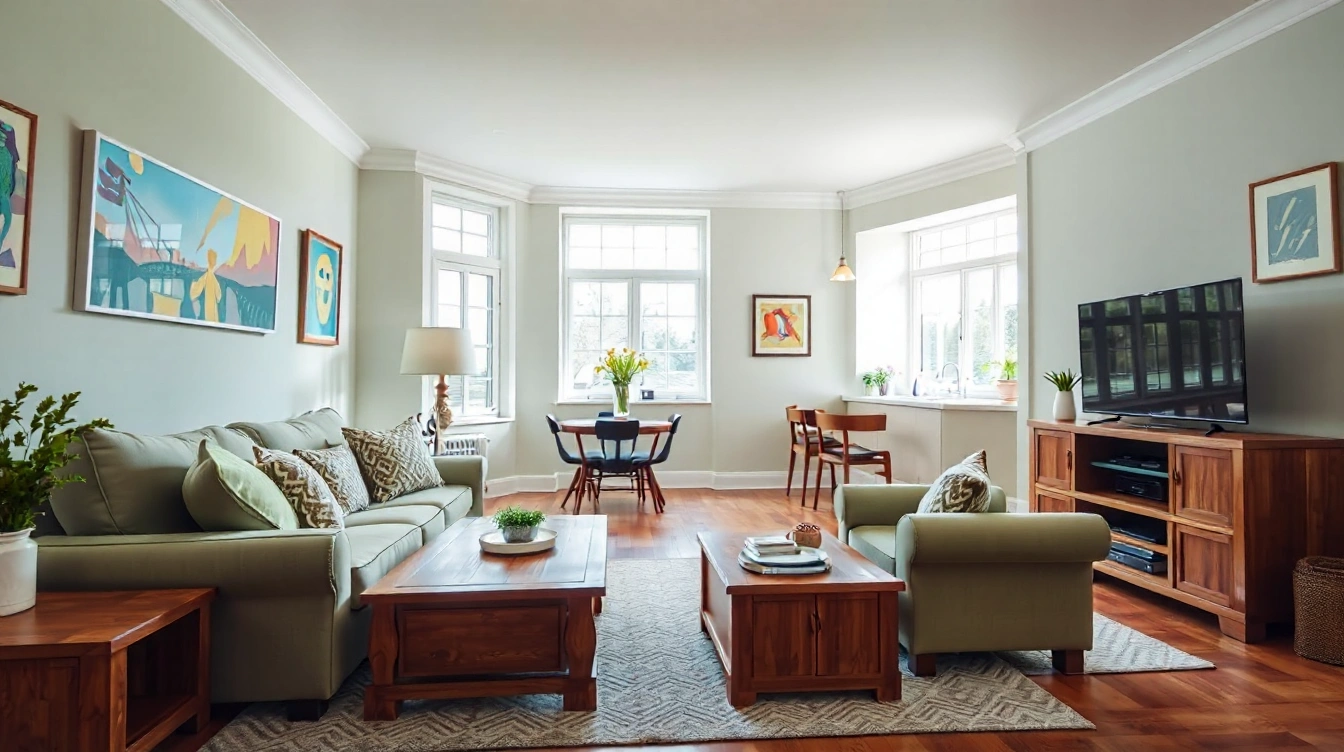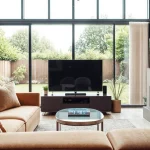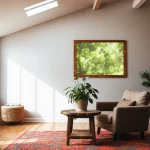The Emotional Influence of UK Home Decor
Understanding the emotional effects of decor reveals that UK home decor mood plays a significant role in shaping residents’ daily experiences. British interior psychology emphasizes how surroundings impact well-being, highlighting that well-curated spaces can reduce stress and foster comfort. Research suggests interiors influence mood by engaging senses through color, texture, and layout, which are carefully woven into traditional UK styles.
UK home decor mood often embraces natural hues and cozy fabrics, elements proven to promote relaxation and emotional balance. The psychological impact isn’t accidental; British design traditions, including classic patterns and warm lighting, nurture a sense of security and belonging. This subtle blend of form and function in UK home decor profoundly affects mental health.
Topic to read : What Are the Top Home Decor Styles Gaining Popularity in the UK?
Experts note that when interiors align with personal tastes and cultural identity, the emotional uplift is stronger. In particular, UK decor tradition’s emphasis on familiarity and calmness addresses common psychological needs, supporting mental health by creating spaces that feel inherently restorative and inviting. This connection between design and emotion underscores the practical importance of intelligent decorating choices in British homes.
Colour Schemes and Mood in UK Interiors
Explore the subtle power of colours to transform your living space.
Also to read : What are the trending furniture styles for UK homes this year?
British interior colour psychology reveals that classic UK colour palettes play a pivotal role in shaping mood. Neutrals such as soft greys and creams create a calming atmosphere, promoting relaxation and mental clarity. Heritage hues, including deep navy and muted greens, invoke a sense of tradition and comfort, fostering feelings of security and stability in British homes.
Understanding the psychological effects of popular UK colours helps homeowners tailor their decor to specific moods. Calming shades like pastel blues reduce stress and encourage tranquility, making them ideal for bedrooms or living areas. Conversely, energising colours such as warm reds and golden yellows stimulate activity and warmth, perfect for kitchens or social spaces. Soothing tones, including gentle lavenders and soft pinks, balance emotional well-being, subtly uplifting without overwhelming.
To incorporate mood-enhancing decor effectively, consider layering British colour palettes through textiles, paint, and accessories. Start with a neutral foundation to maintain versatility, then add accents in mood-boosting tones to refresh your home’s ambiance. Integrating these elements thoughtfully ensures a harmonious and uplifting environment that reflects both personal style and traditional British charm.
The Role of Lighting in UK Home Environments
Lighting is a crucial element in UK interior lighting design, shaping both the functionality and atmosphere of living spaces. Natural light in UK homes naturally influences mood and wellbeing, especially given the country’s often grey and overcast climate. Maximizing daylight through well-placed windows or using light, reflective surfaces can significantly enhance the sense of space and positivity.
Beyond natural light, UK interiors benefit from a thoughtful blend of ambient, task, and accent lighting. Ambient lighting provides overall illumination, essential for daily activities, while task lighting focuses on functional areas such as reading nooks or kitchen countertops. Accent lighting highlights architectural features or decorative elements, creating depth and visual interest.
Experts recommend combining these layers to build uplifting lighting schemes that adapt to different moods and needs. For example, warm-toned LED lights can introduce comfort and coziness, combating the often dim weather. Meanwhile, adjustable dimmers and smart lighting systems support flexible environments that shift from energizing daytime light to relaxing evening moods. This multi-layered approach is key to achieving well-balanced UK home interiors that look and feel inviting around the clock.
Texture and Material Choices for Well-being
Texture plays a vital role in shaping the atmosphere of British homes. Popular UK decor textures such as velvet, wool, and natural wood not only add visual depth but also contribute significantly to comfort and well-being. Velvet cushions and throws, for instance, are frequently chosen for their soft, tactile appeal, promoting a sense of warmth. Wool, with its natural insulating properties, provides a cozy, grounding effect that many UK homeowners find soothing.
The psychological impact of these materials is profound. Soft textures like wool and velvet tend to evoke feelings of safety and relaxation, which are essential for mental rejuvenation. Meanwhile, wooden surfaces introduce an organic element that connects indoor spaces with nature, further fostering tranquility.
In many British homes, these British material trends combine aesthetically pleasing textures with sensory comfort. Imagine a living room where a plush wool rug complements a wooden coffee table, creating a balanced environment conducive to relaxation. Such sensory decor choices encourage positivity by harmonizing the tactile and visual senses, enhancing overall well-being in the home.
Furniture Style, Arrangement, and Emotional Wellness
Choosing the right UK furniture styles profoundly impacts emotional wellness at home. Traditional furniture, with its rich wood tones and classic designs, often evokes feelings of comfort and nostalgia. In contrast, modern UK furniture styles emphasize clean lines and minimalism, promoting a sense of calm and mental clarity. Both styles influence mood, but selecting one that resonates with personal taste is essential to creating a positive environment.
The interplay between home layout and mood cannot be overstated. Thoughtful arrangement encourages a smooth British interior flow, reducing stress and promoting relaxation. For example, avoiding clutter and ensuring clear pathways helps the mind feel less crowded, which is crucial for emotional balance. Spatial flow directly affects how people move and interact in a room, influencing feelings of openness or confinement.
To foster comfort and social connection, arrange furniture to create separate zones for relaxation and conversation. Placing seating in a circular or semi-circular pattern, paired with soft lighting, invites engagement while ensuring privacy. Consider positioning key pieces near windows to maximize natural light—this boosts mood and energy. Prioritizing these elements supports a harmonious home that nurtures both individual well-being and social warmth.
British Decor Trends for a Happier Home
Exploring trending UK decor reveals a strong focus on styles that actively promote wellbeing. Modern British homes increasingly embrace wellbeing-boosting styles by integrating elements that encourage calmness and comfort. One standout trend is the growing popularity of UK home inspiration drawn from nature and heritage, offering both aesthetic charm and emotional benefits.
Biophilic design has surged in the UK, connecting interiors to the natural world through abundant houseplants and natural materials. This approach has been shown to reduce stress and elevate mood, making it a powerful tool for wellbeing. Similarly, cosy minimalism balances simplicity with warmth, creating uncluttered spaces that feel inviting rather than stark. This trend addresses the psychological need for order without sacrificing comfort.
Heritage patterns, when reimagined, weave a sense of history and identity into modern interiors. These designs provide a reassuring link to tradition while refreshing the look of contemporary homes. Collectively, these trends demonstrate a thoughtful shift towards décor that supports mental wellness—an essential consideration in today’s fast-paced UK lifestyle.









